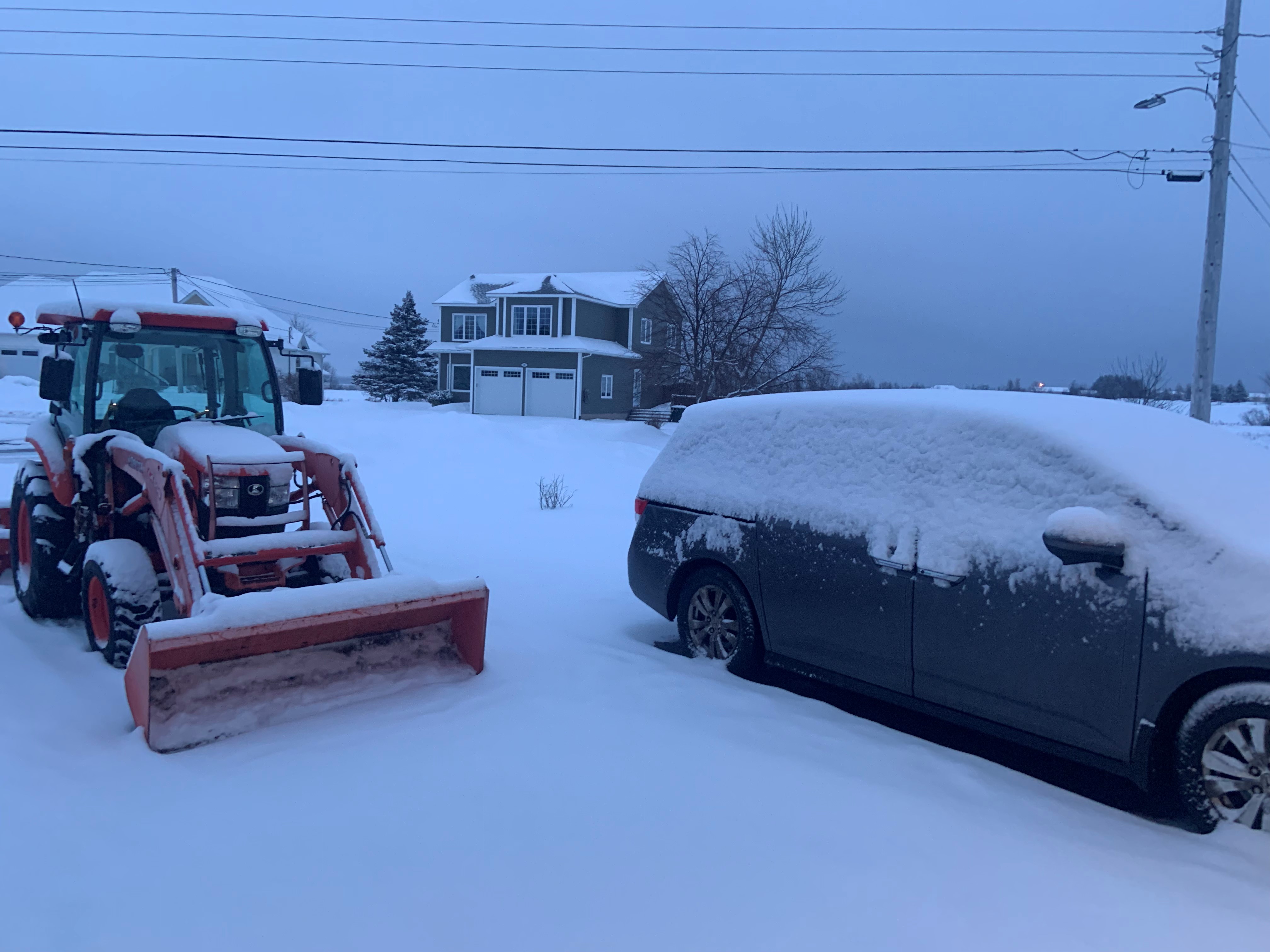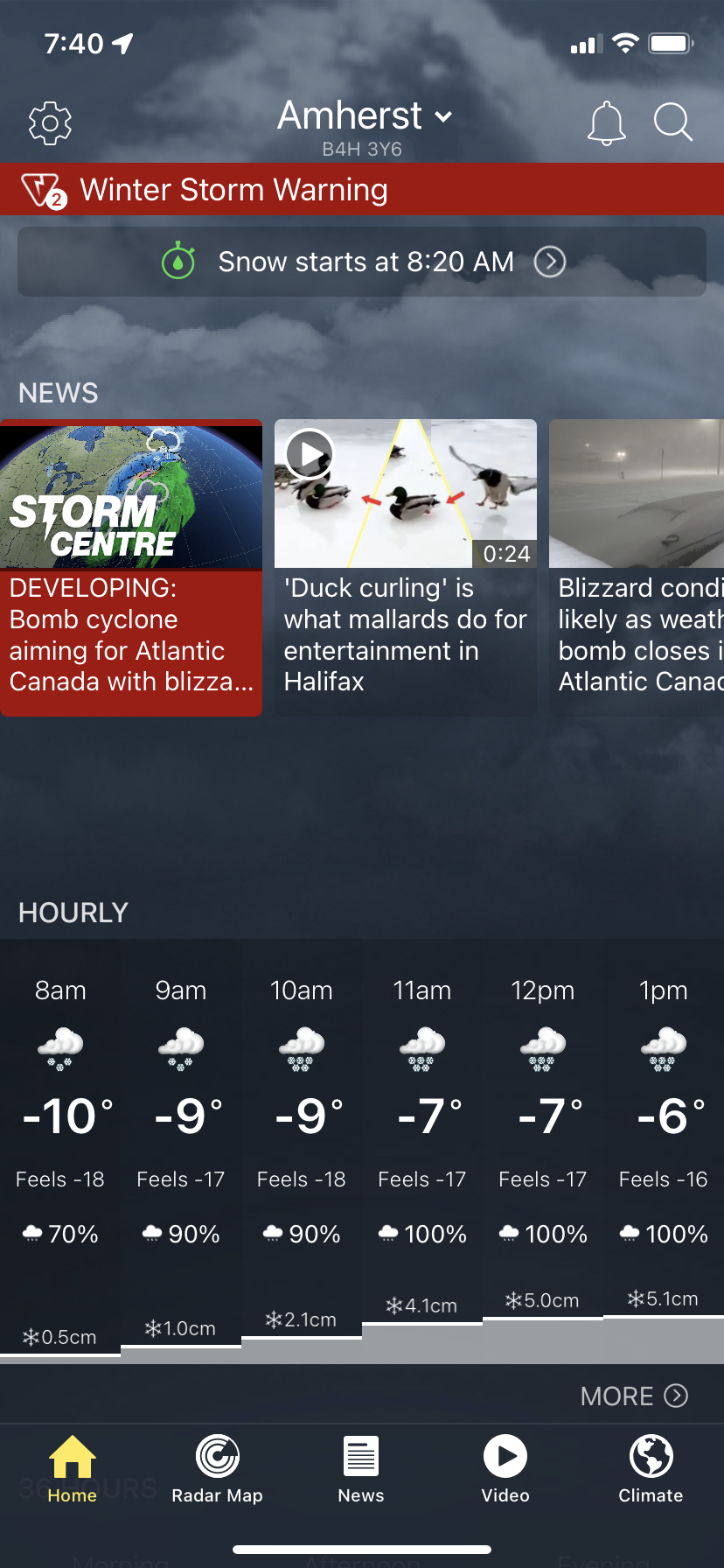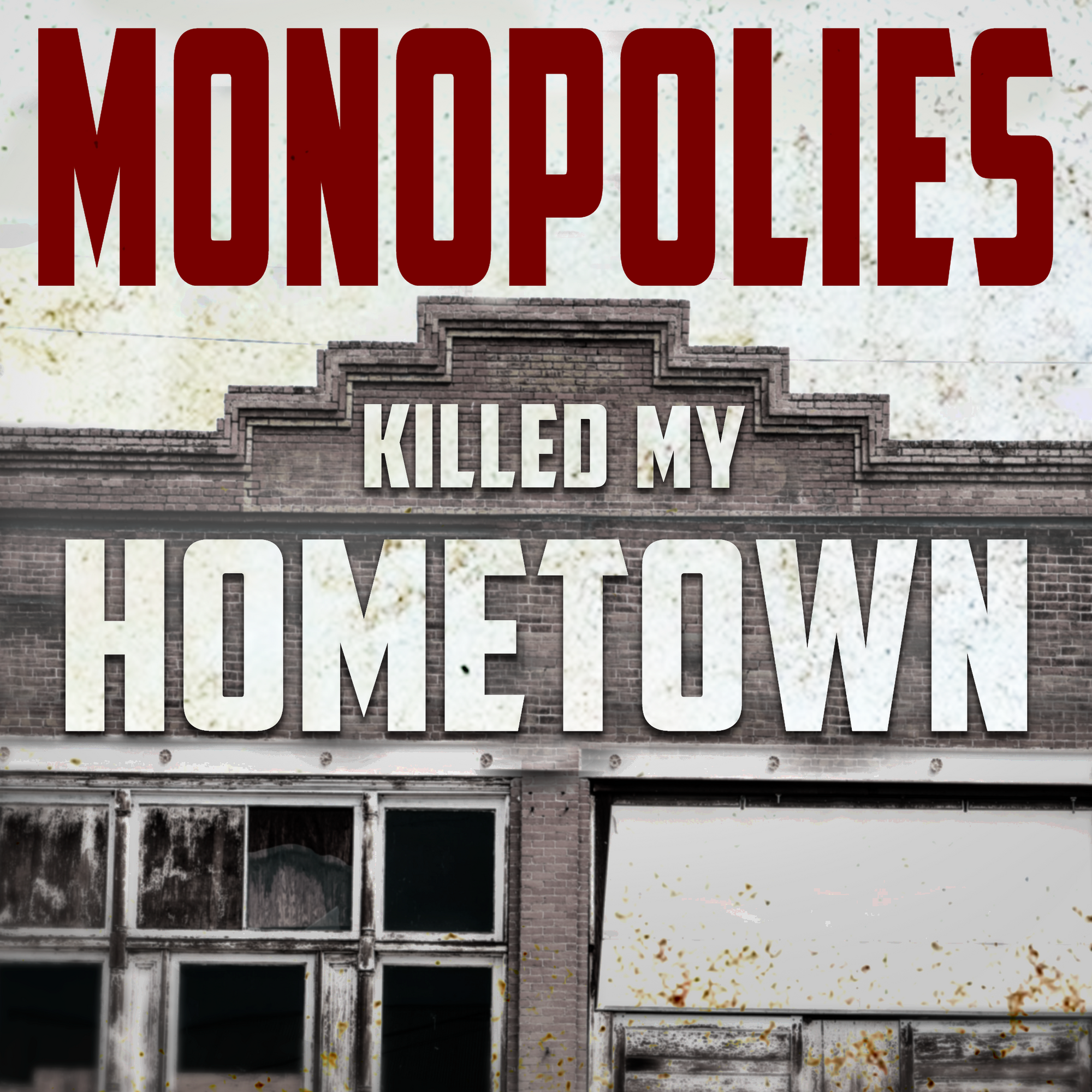Racing a snowstorm for a Vaccine

Saturday, January 29th was exactly 8 weeks from our daughter’s first COVID vaccine dose. Those were very long Omicron-filled 8 weeks and we weren’t going to wait a day longer to get her second dose. We booked her appointment in Parrsboro, Nova Scotia, about 45 minutes away, and I watched the weather all week. We’ve had 4 blizzards out of the last 5 weekends, and the forecast called for one on the 29th too.
I woke up on Saturday to find our vehicles covered in snow.((That’s the tractor I use for clearing snow at our apartments. I don’t drive a tractor regularly.))

I checked the weather forecast – the storm wasn’t supposed to start until about 10:00 am.

I had estimated that we could race the storm to and from Parrsboro. It was going to be tight – we would only have minutes to spare. I woke my wife up and said, “Let’s go!” Our race was on.
We started our road trip to Parrsboro. It had only been 20 minutes and we already hit the first snowfall during our drive down. Oops! this was not part of the plan. I thought we’d get to Parrsboro before the storm started. Regardless, we were committed, no matter what the weather condition was, but our margin for error was now gone.
We arrived at the pharmacy and managed to get in the head of the line and our daughter finally received her shot. We waited inside for 10 minutes, which was long enough to get our daughter a treat. We hit the road once again. I know we were supposed to wait 15 minutes – we didn’t. I justified that we were going to be driving by the local hospital if our daughter had a reaction.
The roads were completely covered in snow, and I could only see the highway lines once and a while. I spent most of the drive in the middle of the road. Luckily, we didn’t see many vehicles; they had enough sense to stay off the roads!
We made it home safely about 15 minutes before the start of the storm really hit. And it was a windy, snowy mess. We ended up with 30 – 40 cm of snow in total.
This was one of the drifts I had to shovel in front of a tenant’s apartment the next morning. Clearing this storm was a slog.

The next morning while I was out shovelling, relief washed over me. The largest COVID risks for my immediate family will be over in two weeks when our daughter has full immunity. I got excited to return to “normal” and leave all these public health measures behind. But not yet, children under 5 years old still could not be vaccinated. Until then I’m pleased to continue with all the public health measures.
My willingness to sacrifice, even after my family is safe, is the exact opposite of the approach that our leaders have taken during COVID. Many of our leaders did not want to ask anyone to make a sacrifice for others. They reluctantly put in restrictions and created financial programs to help people, but then tried constantly to end both of them.
Once the vaccines were authorised it became an uncontrolled sprint to reach an “acceptable” vaccination rate to remove the restrictions and stop the financial supports. At this point, everything became about vaccines, and how vaccines were magically going to save us. We weren’t going to have to change behaviours or learn from past mistakes. We could just move forward.
I couldn’t understand this thinking, but it felt familiar. Over the last month, I realised it’s how we talk about all of our largest problems, especially the economic ones.
Last week Senator Howard’s office published all the submissions received for their solicitation on the review of the Canadian Competition Act in the Digital Era.
My submission was focused on the ‘‘digital era” framing. The summary of my piece is that the digital economy has left small towns and small businesses behind. Focusing on just the digital economy will leave us behind even more. We need a competition policy for the whole economy and country.
The ‘digital era’ framing does not deal with any of the structural problems that caused the decline of small businesses and small communities. Dealing with these problems requires the economic winners to sacrifice in order to strengthen small businesses and communities. Facebook and Google cannot hoard all the digital ad money to the detriment of local news journalism. The retail playing field must be equal to allow local retail to thrive, this means Walmart and Amazon sacrificing some of their power The innovation framing means we don’t have to ask the winners to make a sacrifice because the future will be magically better for all.
Focusing on the future also means we don’t need to look at past behaviours and decisions that have created our current problems. We never talked about how lifting public health measures early allowed COVID to spread and caused many unnecessary deaths. In the economy, focusing on the future means we don’t need to talk about the policy changes that created our growing wealth inequality. We don’t need to deal with tax havens and how corporations are using clever accounting to starve our shared services. We don’t need to enforce our laws to stop the anti-competitive practices that have proliferated throughout the business world. We don’t need to acknowledge that we must govern to stop workers, small businesses and small towns from being exploited by dominant corporations.
None of these gets fixed without looking back at the choices and decisions we made in the past. One of these policy changes we made was to the Competition Act in the 1980’s. Moving forward we need to reform our competition policy and then enforce our laws. This is how we start to equitably distribute power in our society, which then lets us address many of our other shared problems. The conversation on reforming our competition policy is starting. We must speak up and demand the focus of our Competition Act returns to people and our communities, not ‘efficiencies’ or other vague economic terms. We have done this before, and we must do it again.

Member discussion